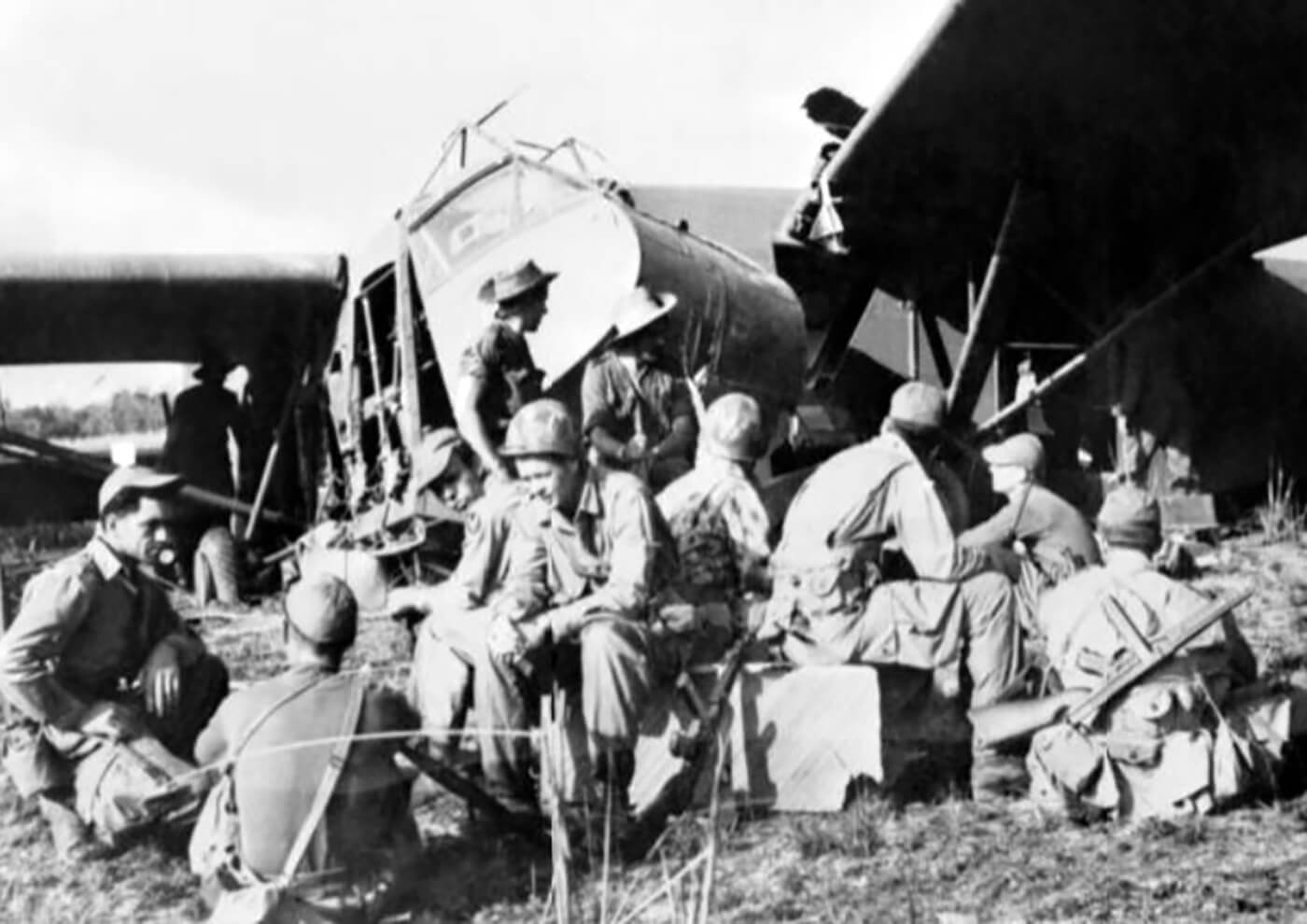| Special Forces Operations in February 1945 |
| February 1st, 1945 – March 3rd, 1945 |
| Schwedt Bridgehead |
| SS-Fallschirmjäger-Bataillon 600, SS-Jagdverbände |
| Otto Skorzeny receives orders to establish a defensive bridgehead at Schwedt on the Oder River, a short distance west of Konigsberg. Skorzeny embarked on this mission from Friedenthal. Upon reaching Schwedt, he discovers that, in addition to the SS-Fallschirmjäger-Bataillon 600 and SS-Jagdverbände unit already under his command, he has to confront the Soviet Army with only a battalion of pioneers and three severely undermanned battalions of elderly reservists. During this time, the roads are congested with civilian refugees fleeing the advancing Soviets and a considerable number of soldiers from fragmented units attempting to retreat westward. Skorzeny deploys reconnaissance platoons across the Oder River’s east bank and orders his troops to secure exit routes from Königsberg. They provide safe passage for both civilian and military personnel, escorting them to Kolberg. At Kolberg, able-bodied military personnel are gathered at local barracks, and those fit for combat are incorporated into Skorzeny’s forces. Additional reinforcements arrive, including a regiment of RAD (Labour Corps) troops and a Volkssturm battalion from Hamburg, which immediately assists the pioneers in constructing defensive fortifications. Luftwaffe Flak units, and surplus Luftwaffe personnel further bolster Skorzeny’s forces. A nearby factory yielded a cache of 7.5cm anti-tank guns. Skorzeny establishes an outer perimeter on the eastern bank of the Oder and dispatches a portion of his troops to aid in Königsberg’s defense. Over time, more reinforcements trickle in, including an inexperienced battalion from Fallschirmpanzerkorps Hermann Goring and a temporary assault gun detachment from Reichsfuhrer-SS Himmler. However, the odds of holding back the Red Army were slim. Soviet units breached Königsberg’s defensive rings, leading to its encirclement by late January 1945 (with the German defenders surrendering on April 9). Skorzeny’s troops continued to defend the bridgehead with determination, launching several local counterattacks with sporadic success. Nevertheless, Skorzeny received orders to return to Berlin on February 28 and did not witness the final events in Kolberg’s defense. The remains of the German troops retreat from the Schwedt Bridgehead on March 3rd, 1945. |
| February 5th, 1944 – March 11th, 1944 |
| Operation Thursday (Insertion Phase) |
| 3rd Indian Infantry Division (Chindits), Galahad (Merrlil’s Marauders), No.1 Air Commando Force |
| Operation Thursday is launched on March 5th, 1944, by the air commandos and air squadrons of both Great Britain and the United States to deliver troops, equipment, and supplies behind Japanese lines in Burma. The operation involves towing gliders and faces initial challenges due to the overloaded gliders causing problems for C-47 tow planes and ropes. However, the units successfully deliver Wingate’s forces to the jungle clearings and improve the strips to facilitate safe landings. The units also protect British ground forces by attacking and destroying the Japanese infrastructure using P-51’s and B-25’s equipped with a 75 mm cannon and twelve .50 caliber machine guns. Additionally, the air commandos conduct unique techniques such as cutting Japanese telephone lines by attaching a weighted cable to P-51’s. The operation results in impressively low casualties and the successful evacuation of all killed, wounded, and sick behind enemy lines, leading to the Distinguished Unit Citation for the 1st Air Commando Group. The unit was responsible for bringing in 2,038 personnel, sixteen horses, 136 mules, and 50,000 kilograms of stores. Including the glider dispatched from Broadway, a total of eighty gliders were launched to Broadway and seventeen to Chowringhee. Personnel sent to the two landing strips by glider totaled 971. Altogether the British and US transport units fly in 9,052 troops, 175 horses, 1,283 mules and 250,000 kilograms of equipment and supplies. |
| February 24th, 1945 – May 8th, 1945 |
| Operation Guillemot |
| Norwegian Independent Company 1, Special Operations Executive |
| Two-man party (B. Sevendal and K. Bredsen) of the Operation Griffon party and two Norwegian army officers of the Norwegian Independent Company 1 (Kompani Linge) as part of a Special Operations Executive. Their mission to reinforce the Operation Grebe Red party and help them to undertake railway sabotage in German-occupied Norway. The team is, like the Operation Griffon team, delivered by parachute on February 24th, 1945. From that time on they assist the men from Operation Grebe Red in their operational area. |
| February 24th, 1945 – May 8th, 1945 |
| Operation Griffon |
| Norwegian Independent Company 1, Special Operations Executive |
| Two-man party (A. Ratche and A. Engebretsen), the Operation Guillemot party and two Norwegian army officers of the Norwegian Independent Company 1 (Kompani Linge) as part of a Special Operations Executive. Their mission to reinforce the Operation Grebe Red party and help them to undertake railway sabotage in German-occupied Norway. The team is, like the Operation Guillemot team, delivered by parachute on February 24th, 1945. From that time on they assist the men from Operation Grebe Red in their operational area. |

